Pakistan’s Craft Revival: Stories of Local Artisans
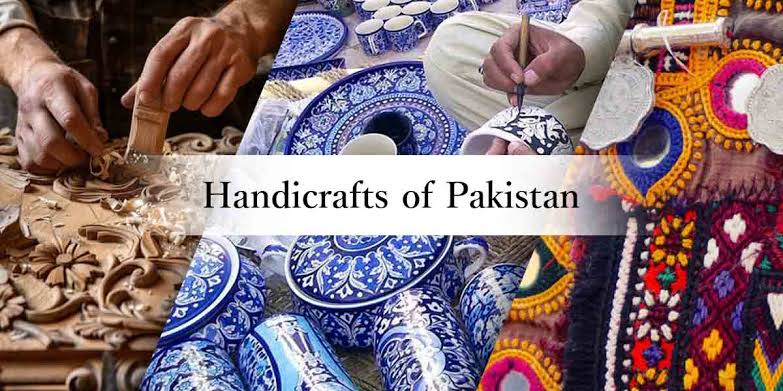
In an age of mass-production and fast fashion, the re-emergence of crafts & hand-made products feels like a breath of fresh air. Across Pakistan, local artisans are weaving, carving, stitching and painting. Their way back into cultural relevance and marketplace visibility.
In this blog post we’ll explore how Pakistan’s rich handcrafted culture is bouncing back. What drives the resurgence, and highlight some of the key regions, crafts and artisans behind the movement.
Why crafts are re-emerging
There are several factors fuelling this revival:
A growing global and domestic appetite for authentic, handmade, locally-made goods rather than factory churn.
Efforts by institutions and festivals (for example Lok Virsa in Islamabad) to showcase folk heritage and artisan work.
New awareness of cultural identity, sustainability, and heritage. People want items with story, with meaning, not just commodity.
Artisan communities gaining access to markets and digital platforms (even if slowly) to reach audiences beyond their immediate geography.
But it’s not without challenges: artisan numbers are declining, younger generations are less interested in craft careers, competition from cheap mass-produced alternatives is intense.
So the story is one of renewal of craft traditions being re-valued, re-imagined and re-marketed rather than of a simple “return to old ways”.
Spotlight on Pakistani craft regions & their artisan stories
South Punjab – Multan, Bahawalpur, Dera Ghazi Khan
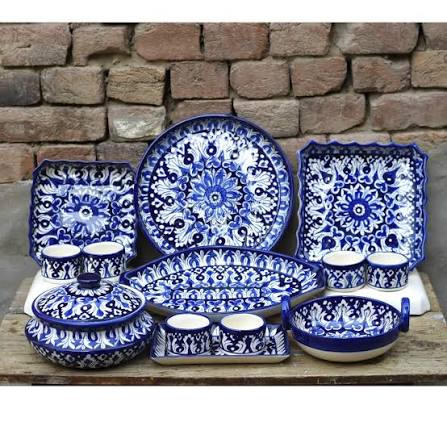
In South Punjab you’ll find a vibrant heritage of detailed hand-embroidery, block-printing and pottery. Multan, often called the “City of Saints”, is also known for its dazzling blue pottery and camel-skin lamps.
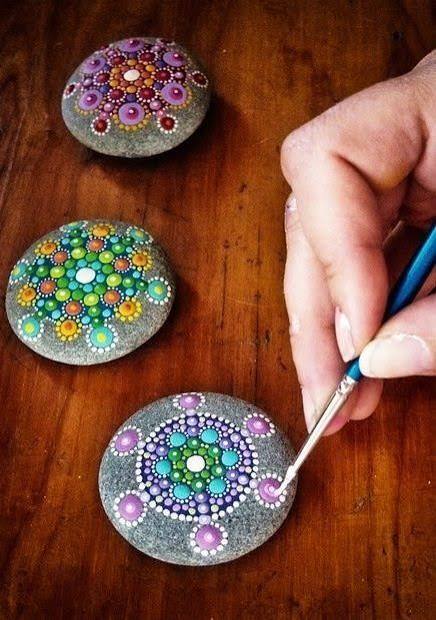
Bahawalpur offers “Chunri” block-print fabrics, intricate embroidery and “Gotta” work.
Dera Ghazi Khan is noted for mirror-work clothing, prayer mats and decorative trays made of date-palm leaves.
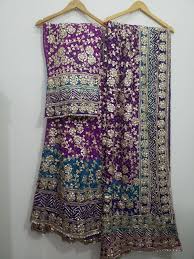
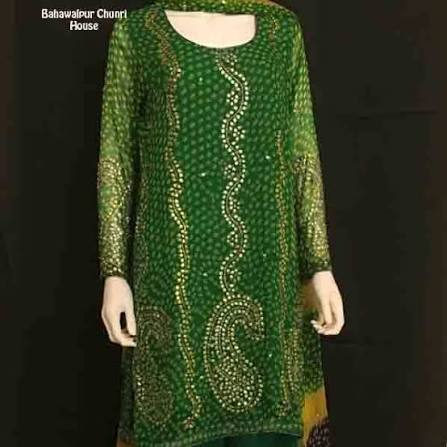
Here, women often take the lead in stitch-based work (embroidery, mirror work) while men may do the heavier carving or metalwork. The crafts are deeply interwoven with family tradition and local identity.
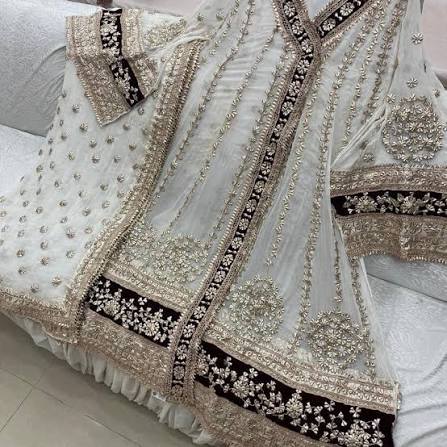
Punjab Wood & Metal Crafts – Chiniot & Lahore
The town of Chiniot is renowned worldwide for its hand-carved furniture in rosewood and sheesham, with intricate floral and geometric motifs.
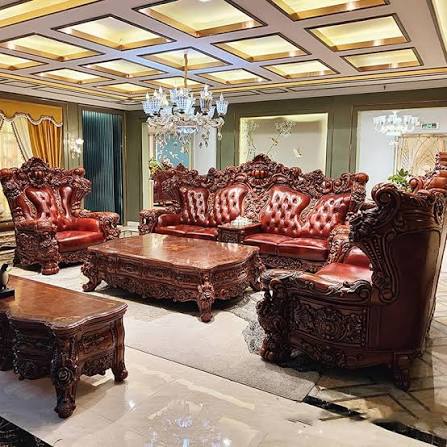

In Lahore you’ll also find brass and copper-ware, khussa (traditional embroidered footwear) and rich textile crafts in the old bazaars.
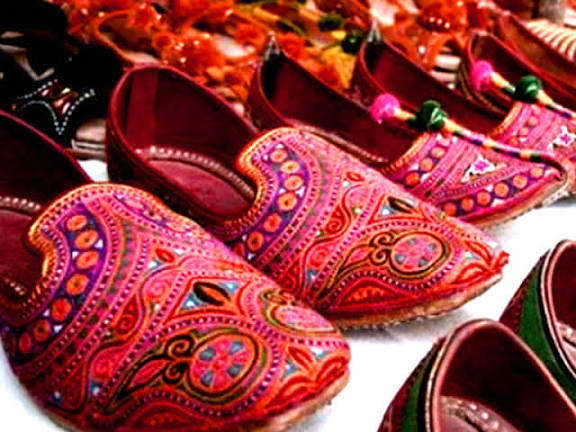
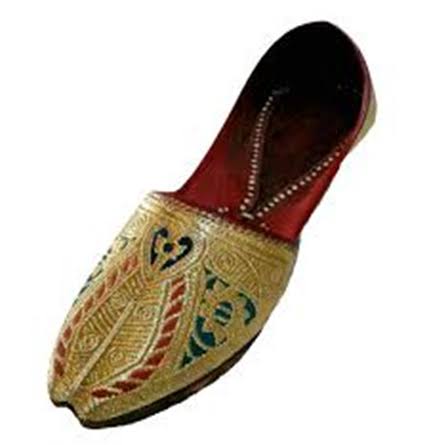
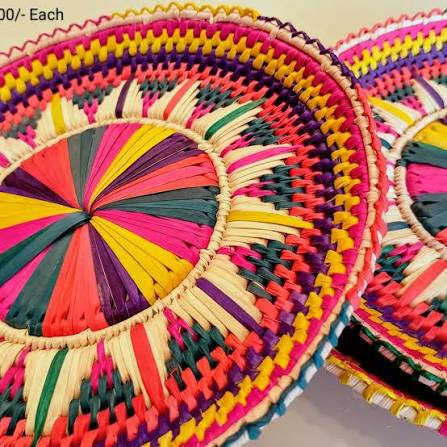
These crafts often combine a legacy of design (Mughal and indigenous) with local materials, and are now being marketed not just domestically but internationally.
Sindh – Hyderabad (Sindh), Sukkur & beyond
In Sindh you’ll find basketry made from palm‐leaves (Khairpur/Sukkur area) where women artisans use date-palm and wheat-husk materials to weave mats, fans and baskets.
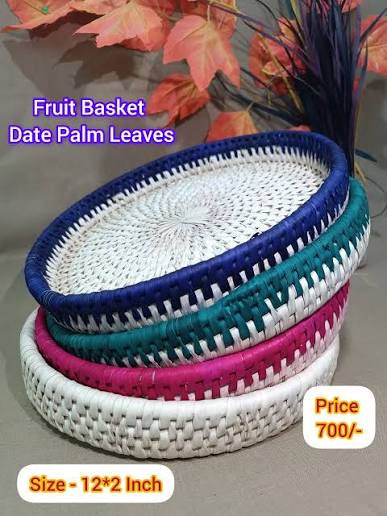
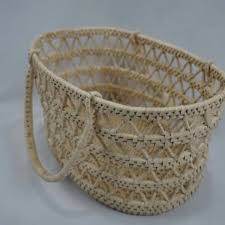
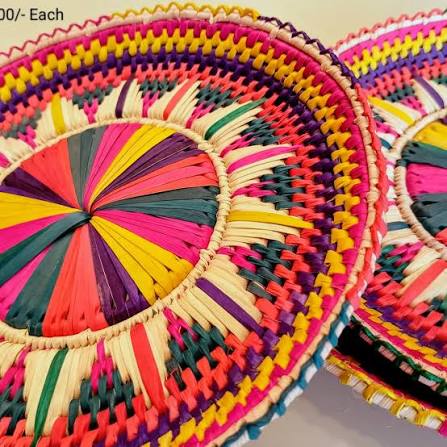
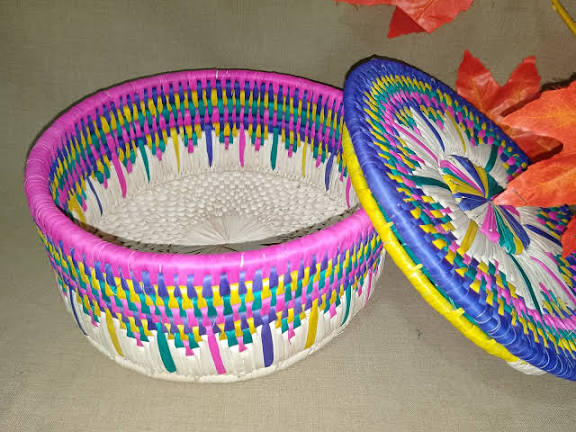
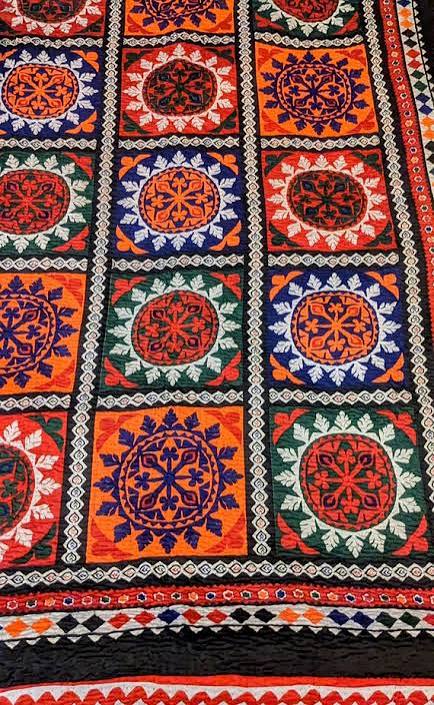
The colourful “ralli” quilts — patchwork/appliqué made largely by women in rural Sindh — are another deep tradition.
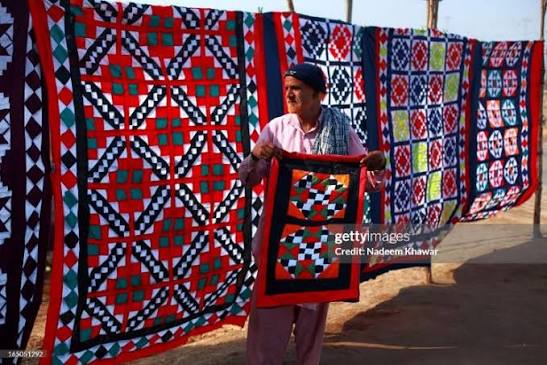
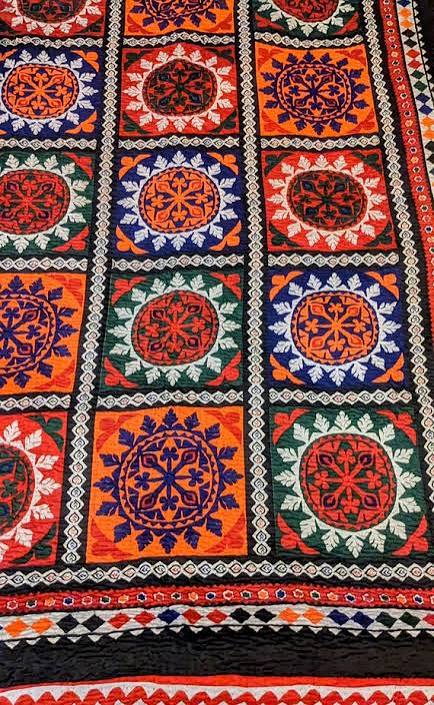
Also, the block-printed Ajrak textile (with indigo and maroon motifs) remains a strong symbol of Sindhi craft identity.
Here the crafts tie to local materials and heritage, and women play a major role in their production and transmission.
Khyber Pakhtunkhwa (KP) & Northern Areas – Swat, Chitral, Gilgit
In Swat valley you’ll find premium woollen blankets, rugs (locally called “lamsay”) and shawls crafted with hard-earned skill.
In Chitral, the iconic “Pakol” cap, embroidered shawls and rustic wool products bring mountain tradition into craft form.
In Gilgit-Baltistan, wood and stone carving, woollen textiles and gemstone jewellery crafted by local artisan communities reflect both the terrain and the trade linkages of the Silk Route.
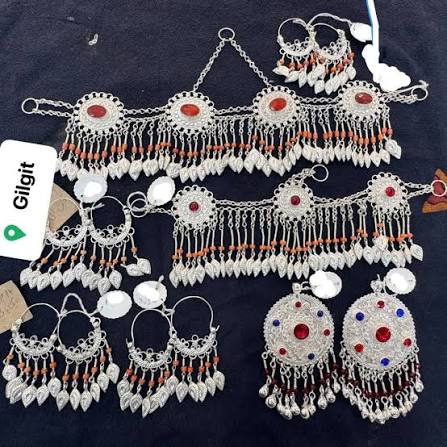

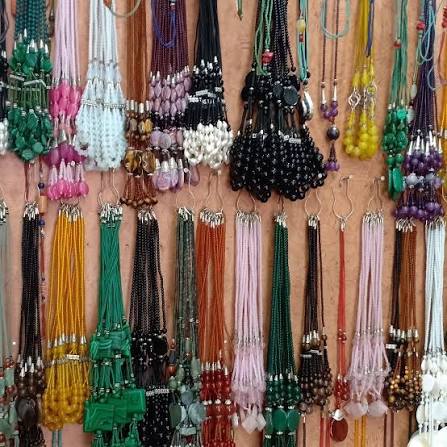
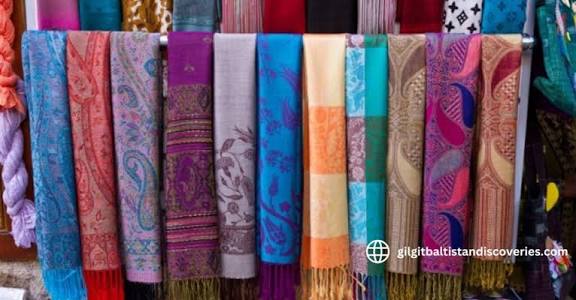
These crafts are intimately tied to climate (wool for warmth), geography (mountain woods/stone) and the perseverance of artisan families.
What these artisan stories tell us
Craft is gendered in interesting ways: Many embroidery, textile and stitch-work crafts are led by women; heavier carving, metal-work or wood-work by men.
Regional identity matters: The style, motifs and materials tie to place — you know you’re seeing a Multani blue-pot, a Sindhi ralli, or a Swati woollen rug.
Materials and sustainability: Many crafts use natural/locally-available raw materials (wool, date-palm, cane, local clay) which gives them an eco-angle.
Challenges exist: Artisans often struggle with declining numbers, younger generations leaving, competition from mass-produced goods.
Market & storytelling matter: For these crafts to thrive they must reach a broader audience, be appreciated for their story & provenance, and fetch living-wage returns.
How you can support and engage
Buy directly (where possible) from artisan-led cooperatives or markets rather than anonymous mass imports.
Explore local craft fairs: for example Lok Mela in Islamabad features over 400 artisans.
Share the stories behind the craft: composition, region, artisan name if available — people buy meaning, not just product.
Encourage training, documentation and younger-artisan engagement so that the tradition doesn’t die out.
When travelling in Pakistan, visit the regional hubs (Multan, Chiniot, Sukkur, Swat, Chitral, Gilgit) and buy local — it keeps craft alive and gives you something unique.
Conclusion
The re-emergence of handmade crafts in Pakistan is more than a hobby-trend; it’s a revival of heritage, identity and livelihood. In the hands of the artisan , whether a woman stitching a ralli quilt in Sindh, a wood-carver in Chiniot, or a rug-weaver in Swat — craft becomes a story of place, people and perseverance. Supporting this craft economy supports culture, community and creativity.
External Links:
🇵🇰 General & Cultural Overview
- Lok Virsa – National Institute of Folk & Traditional Heritage
👉 https://lokvirsa.org.pk
Official website showcasing Pakistan’s folk traditions, artisan profiles, and craft exhibitions. - Pakistan Tourism Development Corporation (PTDC)
👉 https://tourism.gov.pk
Information on cultural tourism and artisan-rich destinations across Pakistan. - UNESCO Intangible Cultural Heritage – Pakistan
👉 https://ich.unesco.org/en/state/pakistan-PK
UNESCO listings of Pakistan’s traditional crafts and heritage elements.
🎨 Regional Craft Resources
Punjab & Multan 4. Multan Blue Pottery | Truly Pakistan
👉 https://trulypakistan.net/handicrafts-of-pakistan
Details about Multan’s blue pottery and Punjab’s embroidery traditions.
- Hospitality Plus – South Punjab Handicrafts
👉 https://www.hospitalityplus.com.pk/handicrafts-marvels-of-south-punjab
Article on Chunri, mirror work, and Bahawalpur’s craft heritage.
Sindh 6. The Crafts of Sindh – Wikipedia
👉 https://en.wikipedia.org/wiki/The_Crafts_of_Sindh
Overview of Sindhi crafts such as Ajrak, Ralli quilts, and basket weaving.
- Ralli Quilt Tradition – Wikipedia
👉 https://en.wikipedia.org/wiki/Ralli_quilt
Cultural and artistic background of Sindh’s colorful patchwork quilts.
Khyber Pakhtunkhwa & North 8. The Art of Handicrafts in Northern Pakistan | Murree Info
👉 https://murree.info/2025/03/09/the-art-of-handicrafts-in-northern-pakistan-a-travelers-guide-to-local-souvenirs
Guide to traditional crafts in Swat, Chitral, and Gilgit.
- Arts and Crafts of Swat Region | Truly Pakistan
👉 https://trulypakistan.pk/arts-and-crafts-of-swat-region
Highlights Swat’s shawls, wool rugs, and hand-woven products.
🪡 Artisan Empowerment & Craft Economy
- Vceela – Connecting Pakistani Artisans to Global Markets
👉 https://vceela.com
E-commerce platform promoting local artisans and handmade crafts. - Hashoo Foundation – Women Artisan Support Projects
👉 https://hashoofoundation.org
Programs uplifting rural women artisans across Pakistan. - Karavan Crafts Initiative – Craft Revival Projects
👉 https://karavancrafts.com
Showcases handmade crafts and artisan collaborations for sustainable income.

References
- “The art of craft”. www.thenews.com.pk.
- “Crafters Expo showcases handicraft ‘made in Pakistan'”. The Express Tribune. 2 December 2019.
- Husain, Hira (14 October 2015). “Handicrafts of Pakistan: A Pour Over of the Famous Artistry”. House of Pakistan. Archived from the original on 18 February 2020. Retrieved 8 March 2020.
- Paracha, Nadeem F. (2 February 2017). “Pakistan: The lesser-known histories of an ancient land”. DAWN.COM.
- “پاکستان کی دستکاری کا تانا بانا”. BBC News اردو (in Urdu). 26 August 2017. Retrieved 8 March 2020.
- Andrews, Basil (12 November 2017). “SOCIETY: OUT OF OUR HANDS”. DAWN.COM.
- “Handicraft-makers: Multan chamber seeks support for artisans”. The Express Tribune. 7 February 2017.
- “The vibrancy of our culture”. www.thenews.com.pk.
- “Sillanwali admired for grooming handicrafts”. The Nation. 12 May 2011.
- “Trend of earthen water pitchers persists in twin cities”. The Express Tribune. 20 June 2019.
1 comment